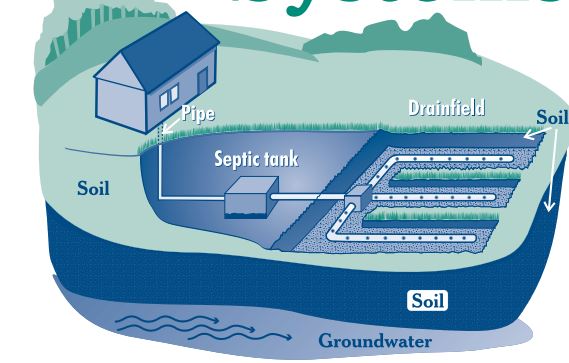How Septic Systems Work
Thousands of houses throughout Southern California have septic systems. These include rural houses or those on large properties. Hooking these houses up to a municipal sewer system may be cost prohibitive, so a septic system is a perfect alternative. Septic systems are underground wastewater treatment structures, commonly used in rural areas without centralized sewer systems. They use a combination of nature and proven technology to treat wastewater from household plumbing produced by bathrooms, kitchen drains, and laundry.
A typical septic system consists of a septic tank and a drain field, or soil absorption field. The septic tank digests organic matter and separates floatable matter (e.g., oils and grease) and solids from the wastewater. Soil-based systems discharge the liquid (known as effluent) from the septic tank into a series of perforated pipes buried in a leach field, leaching chambers, or other special units designed to slowly release the effluent into the soil or surface water.
Alternative systems use pumps or gravity to help septic tank effluent trickle through sand, organic matter (e.g., peat and sawdust), constructed wetlands, or other media to remove or neutralize pollutants like disease-causing pathogens, nitrogen, phosphorus, and other contaminants. Some alternative systems are designed to evaporate wastewater or disinfect it before it is discharged to the soil or surface waters.
Specifically, this is how a typical septic system works:
- All water runs out of your house from one main drainage pipe into a septic tank.
- The septic tank is a buried, water-tight container usually made of concrete, fiberglass, or polyethylene. Its job is to hold the wastewater long enough to allow solids to settle down to the bottom forming sludge, while the oil and grease floats to the top as scum.
Compartments and a T-shaped outlet prevent the sludge and scum from leaving the tank and traveling into the drain field area. - The liquid wastewater (effluent) then exits the tank into the drain field.
- The drain field is a shallow, covered, excavation made in unsaturated soil. Pretreated wastewater is discharged through piping onto porous surfaces that allow wastewater to filter through the soil. The soil accepts, treats, and disperses… wastewater as it percolates through the soil, ultimately discharging to groundwater.
- If the drain field is overloaded with too much liquid, it will flood, causing sewage to flow to the ground surface or create backups in toilets and sinks.
- Finally, the wastewater percolates into the soil, naturally removing harmful coliform bacteria, viruses and nutrients. Coliform bacteria is a group of bacteria predominantly inhabiting the intestines of humans or other warm-blooded animals. It is an indicator of human fecal contamination.
You can download A Homeowner’s Guide to Septic Systems for free, and share it.




